Episode #506- Am I Blue?
Episode #506 - Am I Blue?
Today on Life In Bloom, we’re diving into the Blue - Blue Flowers that is. I’ll make a large scale arrangement themed to the blue skies and clouds. I'm joined by my flower friend meteorologist Aaron, we’ll review the rarest color in all flowers, and a create a blue cocktail using sweet pea flowers.
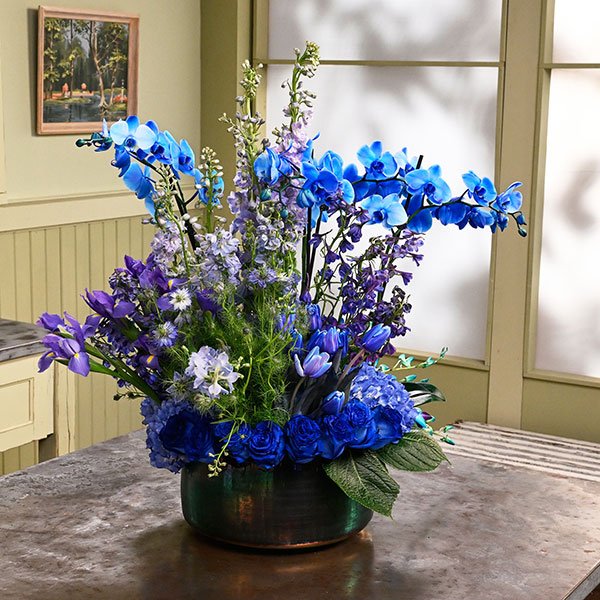
“If you see a tree as blue, then make it blue.” – Paul Gauguin
Blue is the most popular color with the American public, conversely Blue flowers are the most rare in all of nature. Rose breeders have been working towards the hybridization of a Blue Rose for decades, even centuries, with limited progress. It’s not an easy thing to conjure. As the color of the sky, Blue is a color that naturally works with most flowers, so it’s possible to accessorize with Blue even if blooms are not readily available. There are permanent botanicals in shades of Blue - sometimes called Fantasy Flowers. And flowers that have been dyed Blue are also readily available. However, there are several Blue flowers from nature - Iris, Snowdrops, Grape Hyacinth, Delphinium, Forget-Me-Nots, Bachelor Buttons, and Blue Himalayan Poppies - to name a few. Let’s take a deeper dive into the Blue.
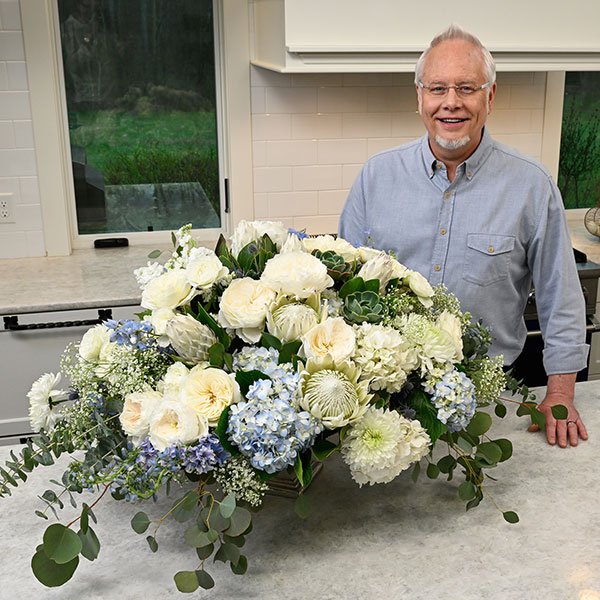
Blue Skies with a Cumulus Arrangement featuring my Flower Friend - and Meteorologist Aaron Ofseyer
My Flower Friend Aaron Ofseyer- an accomplished meteorologist- and I Discuss... why is the sky blue? Which Flowers look like clouds? And how weather can affect flowers- our mood and more... I also ask Aaron to arrange flowers- and tell me more about his history- both flower oriented and more!
We also reflect on blue flowers being the least populous flower color in nature... and Aaron shares a great story regarding his first memory of flowers- that involves Iris in Texas!
Flowers for this segment are furnished by : Elite Bouquet, Galleria Hydrangea, and Bandy Ranch Floral!
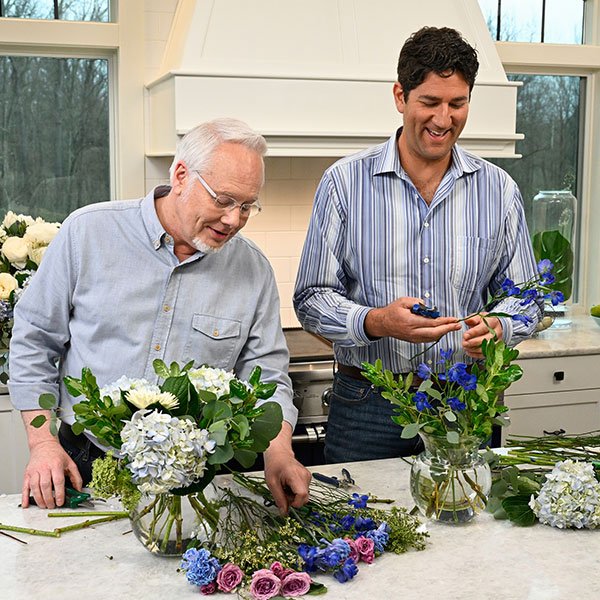
Sweet Pea Vodka Infusion Cocktail - #FlowerCocktailHour with Aaron Ofseyer
Butterfly pea flowers are is used for the traditional Thai welcome iced tea drink - just add a teaspoon of honey and squeeze of lemon to your tea and serve over ice. It has an amazing vivid blue color which changes to purple when the lemon is added.
A very interesting tea to try:
- Hot or iced herbal tea
- Add honey and lemon for the traditional Thai welcome drink – nam dok anchan
- Liquor infusions and cocktail ingredient
- Great for a colorful punch ingredient
Aaron and I follow up with #flowercocktailhour- featuring a Blue Flower Infused Vodka... that is refreshing and summer-like!
Butterfly Pea Flower (Blue) infused Vodka- (recipe follows)
Instructions:Place Vodka in a Large Canning Jar- with a Lid... you can use any brand of vodka you wish- I prefer Svedka Vodka for infusing- it's a calmer vodka and it's easy on the cash account- I use it all the time for flower infusing...
Place about a 1/2 cup of dried Butterfly Pea Flowers (available on line- get the organic ones from Anthony's - they are the best)..
Seal the Lid and allow the mixture to steep for about 30-40 minutes- it doesn't take long...
Strain the Mixture with a fine colander- to extract all the flower particles... then re-cant into a decorative bottle- or store in the covered canning jar.
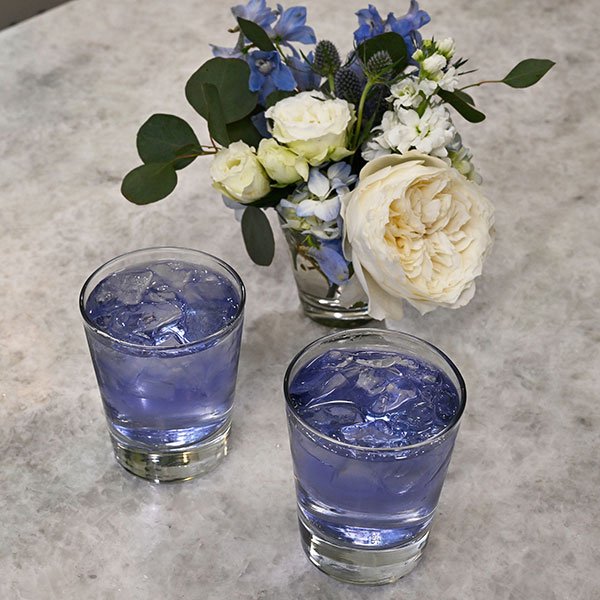
Blue Pea Flower- Infused Vodka Soda - #FlowerCocktailHour
Fill a rocks glass with plenty of ice
Add 2 ounces of Blue Butterfly Pea Infused Vodka...
Top off with Soda Water- I prefer San Pellegrino Fizzy water...
Enjoy- PS... you can garnish with a lemon - but when the squeezed lemon is mixed in the Beverage will turn from Blue to Purple- because of the added acidity!
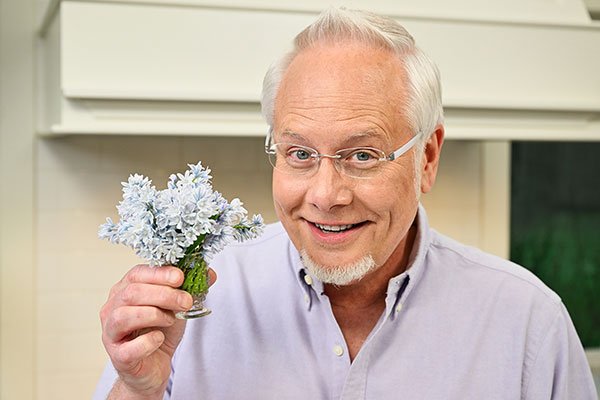
Early or Mishchenko Squill Arrangement
J creates a tiny arrangement with Squill - plays with scale and perception - even a small arrangement brings joy and is worthwhile.
I planted hundreds of Squill bulbs in my garden. You might not consider making an arrangement with these adorable blooms given their scale - they’re not very big, right? But give them a chance…
Flowers: Early Squill cut from J’s Garden
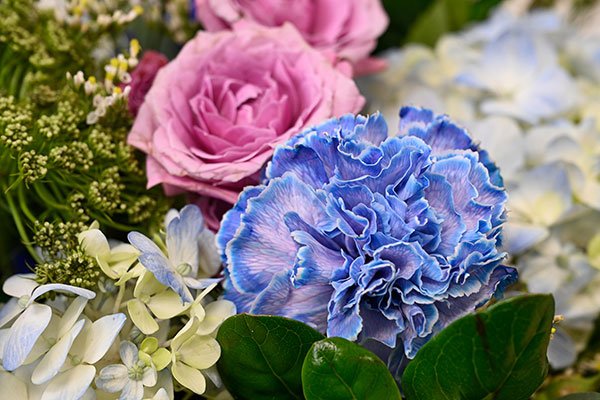
Bloom 365 idea/Tip/Trick - Dying Flowers- Specifically Carnations - to change the color!
Here’s your Bloom 365 Tip- helping you enjoy flowers every day of the year…
It’s easy to change the color of Carnations - in fact they are one of the easiest flowers to dye!
As a teenager- I worked at a friend’s flower company- where I dyed carnations every week- hundreds of them in all different colors…
Instructions for dying Carnations!
It’s best to work with a flower that is a Little thirsty- if you want to dye a carnation let it set out of water for about 1-2 hours… then mix up your flower dye formula…
Food Coloring works well- be sure you make the solution very strong- that means lots of pigment in the water- for the best results…
Then cut your carnation stem- be sure to cut between the nodes… and place the stem into the water dye solution…
Depending on how thirsty your carnation is- the process can take 15 minutes to several hours…With this process- we are dying the carnation from the INSIDE- systemically - the dye is pulled up inside the stem- through the vascular system- and then the dye appears- through the white petals from the inside…
Other flowers that work well are Queen Anne’s Lace, Chrysanthemums, and Babies Breath!”
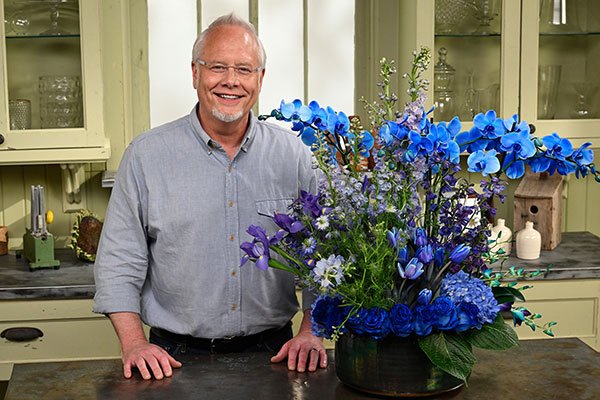
Dyed Flowers
Flowers featured in this project were furnished by:
Westerlay Orchids, Sun Valley Delphinium & Iris, Mayesh Blue Roses, CamFlor Nigella, BLUE Specific- Color Enhanced Flowers
As I mentioned earlier in the show, Blue flowers in nature can be hard to come by for arranging. For many years, flowers have been dyed blue with somewhat polarizing results - people either love them or they don’t. I love all flowers, however, flower dying has advanced in many ways and created more refined hues and shades of Blue. Let’s take a look at various Blue blooms..
J makes an arrangement - and gives you a chance to decide if you can tell which ones are dyed and which ones not - how many did you get correct?
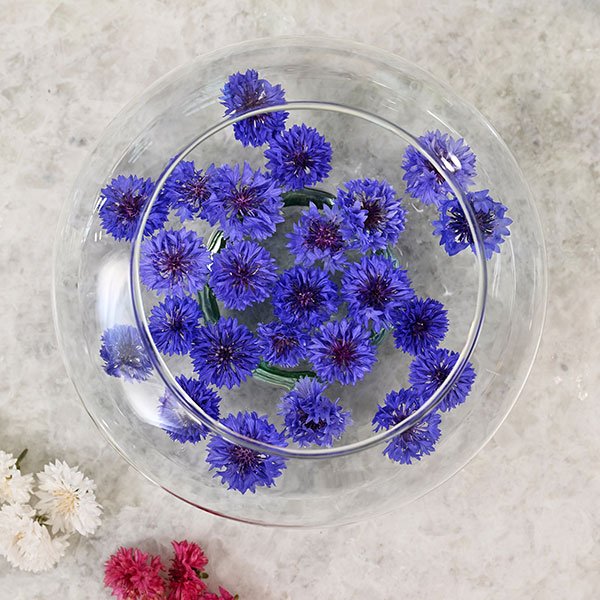
Featured Flower: Bachelor’s Buttons (Cornflower)
here’s a link to additional information about the Bachelor Button- that I discovered while doing my research…
https://www.thespruce.com/grow-bachelors-buttons-1315694
- If you’re looking for a true blue color in a flower, the bachelor’s button, sometimes known as annual cornflower, is a beautiful addition to any garden.
- Their fully double flowers look almost like miniature carnations with small 1 1/2-inch blooms that appear from last spring through midsummer
- The quick-growing flowers will reach a height of up to 48 inches
- The species plant has bright blue flowers, but there also are cultivars offering pink, white, and crimson flowers
- Bachelor’s buttons typically bloom for about 10 weeks, from May to mid-July, but deadheading them extends and increases the blooming
- Bachelor’s buttons produce edible flowers, so when grown organically, you can include them in salads or as an edible garnish. Some describe their taste as sweet or cucumber-like.
- Bachelor’s buttons are a natural choice for wildflower gardens, and their bright blue blossoms are highly appealing to bees and butterflies
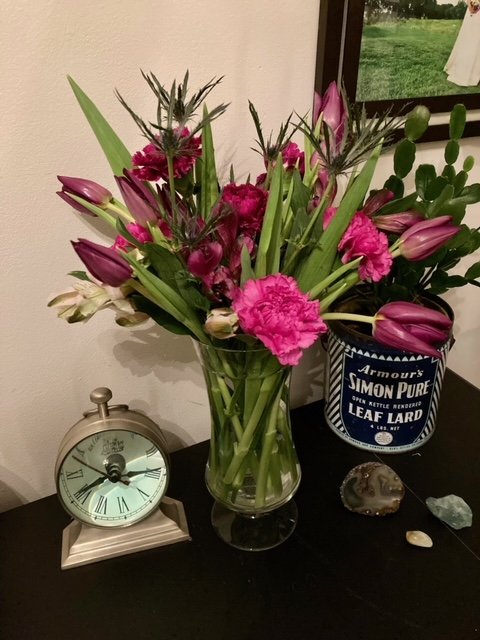
Flowers from YOU- Life in Bloom Viewer Feedback
Let’s look at 3 arrangements from viewer Ellie Martin Cliffe… who shared these Photos- I love this relaxed horizontal bouquet- with the Sunflower… and who can resist a Mink Protea- accompanied with textural foliage… I also love these Classic Tulips partnered with other flowers- after all it’s all about the flowers!
Thanks Ellie those were all beautiful. I LOVE to see pictures of flower arrangements inspired by the show - dubbed “Schwankes” by fans Brad and Kelly. Send in your “Schwankes” to j@ubloom.com - the letter j at the letter u- bloom.com and watch for more Schwankes on upcoming shows
Viewer: Ellie Martin Cliffe
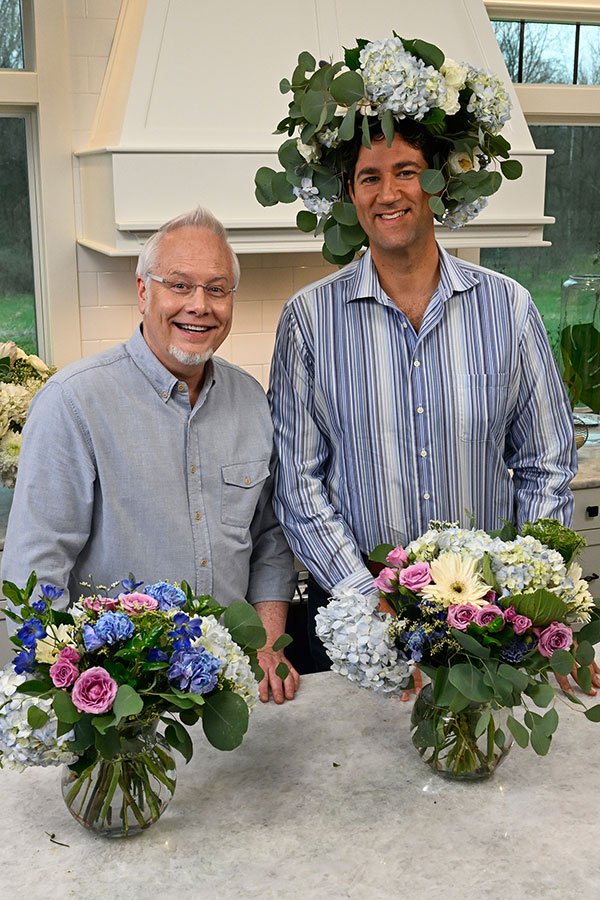
I hope this episode has been enlightening about Blue Flowers and even given you a case of the blues - in a good way, of course. For Life In Bloom, I’m J Schwanke.”

